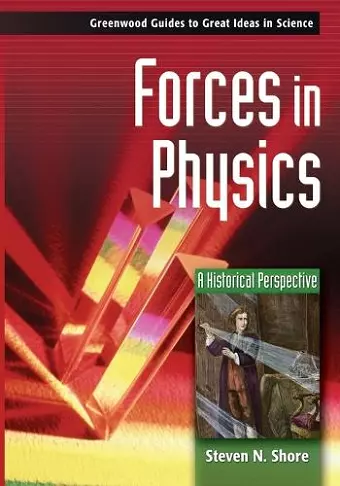Forces in Physics
A Historical Perspective
Format:Hardback
Publisher:Bloomsbury Publishing PLC
Published:30th Jul '08
Currently unavailable, and unfortunately no date known when it will be back

Tells how the concept of force has become a most useful tool for understanding the nature of the universe.
Traces the development of scientific concepts since ancient times. This series helps students understand not only what scientists know, but how they came to know it. It supports the recommendations of national science education standards on the history and nature of science; provides print and electronic resources for research; and more.
Force is one of the most elementary concepts that must be understood in order to understand modern science; it is discussed extensively in textbooks at all levels and is a requirement in most science guidelines. It is also one of the most challenging - how could one idea be involved in such disparate physical phenomena as gravity and radioactivity? Forces in Physics helps the science student by explaining how these ideas originally were developed and provides context to the stunning conclusions that scientists over the centuries have arrived at. It covers the history of all of the four traditional fundamental forces - gravity, electromagnetism, weak nuclear force, and the strong nuclear force - and shows how these forces have, over the years, allowed physicists to better understand the nature of the physical world.
Forces in Physics: A Historical Perspective traces the evolution of the concept from the earliest days of the Ancient Greeks to the contemporary attempt to form a GUT (Grand Unified Theory): Aristotle and others in Ancient Greece who developed ideas about physical laws and the introduction of forces into nature; Newton and others in the Scientific Revolution who discovered that forces like gravity applied throughout the universe; the 19th century examinations of thermodynamics and the forces of the very small; and 20th century developments—relativity, quantum mechanics, and more advanced physics—that revolutionized the way we understand force. The volume includes a glossary of terms, a timeline of important events, and a bibliography of resources useful for further research.
"The book includes several illustrations, end-of-chapter notes, a good bibliography, a helpful index, a chronology of concept of force, and a brief appendix that provides the relevant mathematics... Highly recommended. All readers/libraries." - Choice
ISBN: 9780313333033
Dimensions: unknown
Weight: unknown
256 pages